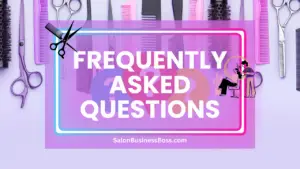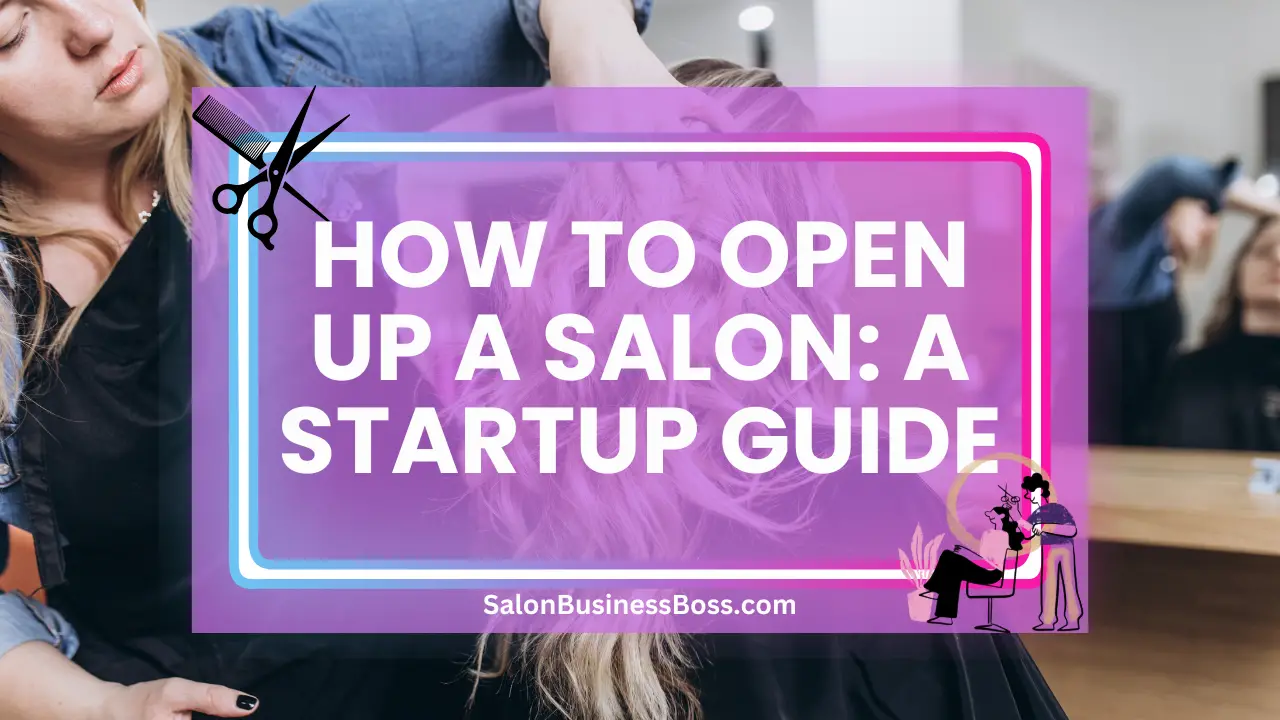Opening a salon can be an exciting venture, but it also comes with its fair share of challenges. One key aspect to ensure its success is establishing effective communication with both clients and employees. In this article, we’ll explore the importance of mixing formal and fun communication techniques to create a positive and engaging salon environment. We’ll also discuss how motivated and engaged employees play a pivotal role in keeping clients happy and satisfied. Additionally, we’ll introduce the concept of utilizing a nimble salon management software to simplify the daily hustle and streamline salon operations.
I. Formal and Fun Communication: Striking the Right Balance
In any salon, communication is the foundation of success. A formal approach is essential for conveying important information, setting expectations, and maintaining professionalism. However, incorporating fun and friendly communication helps build rapport with clients and fosters a welcoming atmosphere.
1. Greeting & Welcoming Clients:
First impressions are powerful, and in a salon setting, they can make or break a client’s experience. As clients walk through the salon doors, it’s essential to greet them warmly and genuinely. A simple “hello” accompanied by a warm smile can create an immediate connection, making clients feel welcomed and appreciated. This initial greeting sets the tone for the entire salon visit, making it crucial to start on a positive note.
Moreover, a warm welcome fosters a sense of comfort and ease, especially for new clients who may be visiting the salon for the first time. It conveys a message of care and hospitality, making clients more receptive to the salon’s services and offerings. Remember, a friendly and personable greeting can leave a lasting impression, leading to satisfied clients who are more likely to become loyal patrons.
2. Active Listening & Empathy:
Effective client consultations hinge on active listening and empathy. Salon staff should take the time to listen attentively to clients’ needs and desires, ensuring that their preferences are understood and acknowledged. By actively engaging in the conversation, staff can demonstrate genuine empathy and understanding, making clients feel valued and respected.
When clients feel heard and understood, they are more likely to trust the expertise of the salon staff, building a strong client-stylist relationship. This trust and rapport can lead to increased customer loyalty and repeat visits. Active listening not only helps in delivering the desired services but also allows salon staff to identify potential concerns or issues that clients may have, enabling them to address those concerns proactively.
Greeting clients warmly and practicing active listening with empathy are integral components of a successful salon experience. By mastering these interpersonal skills, salon staff can create a welcoming and trusting environment that fosters long-term client relationships and contributes to the overall success of the salon.
3. Personalized Recommendations:
Providing personalized recommendations is a hallmark of exceptional customer service in the salon industry. While formal communication sets the groundwork for professionalism, the art of tailoring services and products to individual clients demonstrates expertise and a genuine commitment to meeting their specific needs.
A skilled stylist who takes the time to understand a client’s hair type, lifestyle, and preferences can offer personalized recommendations for the perfect haircut or hair treatment. This level of attention makes clients feel valued and cared for, enhancing their overall salon experience.
Personalized recommendations also extend to suggesting suitable hair care products or beauty treatments based on a client’s unique requirements. A well-informed stylist who can match the right products to address specific hair concerns leaves a lasting impression, and clients are more likely to trust their stylist’s expertise and return for future services.
4. Feedback and Reviews:

Feedback and reviews are invaluable tools for improving salon services and customer satisfaction. While formal feedback methods like surveys have their place, adding a fun element to encourage client participation can boost engagement and gather more comprehensive insights.
Encouraging clients to provide feedback on their salon experience shows that the salon values their opinions and strives to continually improve. This open communication fosters a sense of partnership between the salon and its clients, leading to enhanced loyalty and trust.
To incentivize feedback, consider offering small rewards or hosting contests where clients have a chance to win prizes. These initiatives create excitement and motivate clients to share their experiences willingly. Moreover, publicly acknowledging positive reviews or testimonials can build social proof, attracting new clients and reinforcing the salon’s reputation for outstanding service.
Read more about: How to Build Client Loyalty and Keep Your Salon Chair Busy
II. The Power of Motivated & Engaged Employees
Behind every successful salon is a team of motivated and engaged employees. When salon staff are passionate about their work and feel valued, they are more likely to provide exceptional service, leading to happier clients.
1. Creating a Supportive Work Culture:
A supportive work culture is the bedrock of a successful and harmonious salon team. By promoting an environment that values open communication, teamwork, and professional growth, salon owners can cultivate a motivated and engaged staff. Encouraging staff to share their ideas and opinions fosters a sense of ownership and empowerment, making them feel invested in the salon’s success.
A supportive work culture also emphasizes teamwork, where staff collaborates and supports one another. This camaraderie enhances productivity and ensures that clients receive consistent and excellent service. In addition, offering opportunities for professional growth, such as attending workshops or industry events, demonstrates the salon’s commitment to employee development and helps keep the team updated with the latest trends and techniques.
2. Recognizing Achievements:
Recognizing and celebrating employees’ achievements is a powerful way to boost morale and foster a positive work environment. Acknowledging accomplishments, whether it’s reaching sales targets or delivering exceptional customer service, makes employees feel valued and appreciated.
Publicly acknowledging their achievements, such as mentioning it during team meetings or on social media platforms, not only motivates the individual but also inspires others to strive for excellence. Celebrating milestones, work anniversaries, or personal achievements further reinforces a sense of pride and loyalty among staff.
Recognizing achievements can take various forms, from verbal praise and personalized notes to small rewards or incentives. By consistently recognizing employee efforts, salon owners can cultivate a culture of recognition and encouragement, contributing to higher job satisfaction and staff retention.
3. Offering Training and Development:
Investing in continuous training and development is a testament to a salon’s commitment to its employees’ professional growth and success. Providing opportunities for staff to enhance their skills and knowledge keeps them engaged and motivated.
Ongoing training not only improves their proficiency in offering salon services but also keeps them informed about the latest trends and industry advancements. This, in turn, enhances the salon’s reputation for providing up-to-date and cutting-edge services.
Motivated employees appreciate the investment in their growth and are more likely to stay loyal to the salon, reducing turnover and associated costs. As employees grow and develop, the salon benefits from a more skilled and capable team, ultimately translating to improved customer satisfaction and business success.
4. Incentives and Rewards:
Implementing incentive programs and rewards is an effective way to drive employee performance and maintain a high level of enthusiasm in the salon. A commission-based structure, where employees earn a percentage of the revenue generated, can fuel healthy competition among stylists and encourage them to excel in their services.
Recognizing outstanding performers with an “Employee of the Month” or similar recognition program showcases the salon’s appreciation for their hard work and dedication. Such initiatives not only boost employee motivation but also create a positive and supportive work environment.
Incentives and rewards need not be extravagant; simple gestures, such as gift cards or special privileges, can make a significant impact. Regularly reviewing and updating these programs keeps them fresh and relevant, ensuring they continue to drive positive results and maintain a motivated and engaged salon team.
III. Simplifying the Daily Hustle with a Nimble Salon Management Software
In the fast-paced salon industry, efficiency is key to success. A nimble salon management software can be a game-changer in streamlining daily operations and enhancing customer experience.
1. Appointment Scheduling Made Easy:

A salon management software revolutionizes the way appointments are scheduled by providing clients with a convenient online platform. Clients can now book their preferred time slots from the comfort of their homes, eliminating the need for time-consuming phone calls or walk-ins. This not only enhances customer satisfaction but also reduces the chances of missed appointments, leading to a more efficient salon operation.
The software’s automated scheduling system also optimizes staff scheduling, ensuring that salon resources are utilized effectively. Salon owners and staff can access real-time updates on the appointment schedule, making it easier to manage their time and workload. With automated reminders and confirmations sent to clients, the likelihood of last-minute cancellations decreases, reducing revenue losses.
Read more about: Hair Salon Equipment List: Empowering Your Stylists
2. Managing Inventory and Supplies:
A salon management software streamlines the often daunting task of managing inventory and supplies. Salon owners can now track inventory levels, monitor product usage, and set up reordering schedules effortlessly. This ensures that essential salon supplies, such as hair products and beauty essentials, are always in stock when needed, preventing unnecessary delays in service delivery.
With inventory management features, salon staff can accurately monitor product usage, identify popular products, and optimize stock levels to avoid overstocking or running out of in-demand items. The software’s data-driven insights help salon owners make informed decisions about their product inventory, promoting cost-efficiency and better resource allocation.
3. Simplified Point-of-Sale System:
The salon management software’s integrated Point-of-Sale (POS) system streamlines the checkout process, making it seamless and efficient for both clients and staff. Clients can pay for services and products effortlessly, using various payment methods, from cash to credit cards and digital wallets. This user-friendly experience enhances customer satisfaction and leaves a positive impression.
For salon owners, the software’s POS system simplifies financial record-keeping, as each transaction is automatically recorded in the system. This eliminates the need for manual bookkeeping and reduces the chances of human errors. The detailed sales reports and financial insights provided by the software enable salon owners to track revenue, monitor sales trends, and identify opportunities for growth.
4. Customer Data Management:
Maintaining a comprehensive database of client information is made easy with the salon management software. It centralizes client preferences, history, and contact details, providing a holistic view of each client’s journey with the salon. With this information readily available, salon staff can offer personalized services, tailoring each experience to the client’s preferences and needs.
Personalized service not only enhances customer satisfaction but also fosters customer loyalty. The software’s targeted marketing capabilities enable salon owners to design effective promotional campaigns based on client data, leading to increased customer retention and repeat business.
Conclusion
Opening and running a successful salon requires a delicate balance of formal and fun communication techniques, motivated employees, and streamlined operations. By mixing formal professionalism with a touch of friendliness, salon owners can create a welcoming environment that resonates with clients. Motivated employees who feel valued and supported will go the extra mile to ensure client satisfaction. And, by utilizing a nimble salon management software, daily operations can be simplified, leaving more time for delivering excellent services and building lasting relationships with clients. With the right approach, opening up a salon can be a rewarding journey filled with happy clients and a thriving business.
Frequently Asked Questions

1. What salon equipment and supplies are essential?
Essential salon equipment includes styling chairs, hairdryers, manicure stations, and product shelves. Purchase quality salon supplies like hair products, nail products, and spa essentials.
2. How can I attract clients to my salon?
Utilize effective marketing strategies, such as social media marketing, online advertising, promotions, partnerships, and a visually appealing salon storefront.
3. What staff do I need to hire for my salon?
Depending on your salon’s services, hire licensed cosmetologists, stylists, nail technicians, receptionists, and possibly assistants.
To learn more on how to start you own salon checkout my startup documents here.
Please note that the contents of this blog are for informational and entertainment purposes only and should not be construed as legal advice. Any action taken based on the information provided in this blog is solely at your own risk. Additionally, all images used in this blog are generated under the CC0 license of Creative Commons, which means they are free to use for any purpose without attribution.

About the author. Entrepreneur and Salon Business Fan.
Hi! I am Shawn and I am a happy individual who happens to be an entrepreneur. I have owned several types of businesses in my life from a coffee shop to an import and export business to an online review business plus a few more and now I create online salon business resources for those interested in starting new ventures. It’s demanding work but I love it. I do it for those passionate about their business and their goals. That’s why when I meet a salon business owner, I see myself. I know how hard the struggle is to retain clients, find good employees and keep the business growing all while trying to stay competitive.
That’s why I created Salon Business Boss: I want to help salon business owners like you build a thriving business that brings you endless joy and supports your ideal lifestyle.

